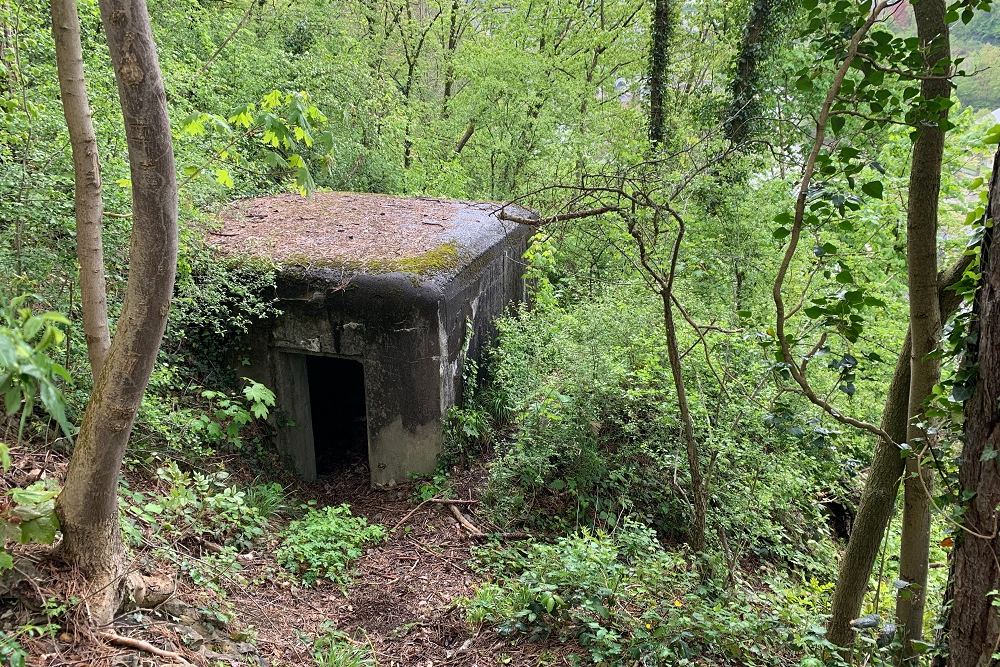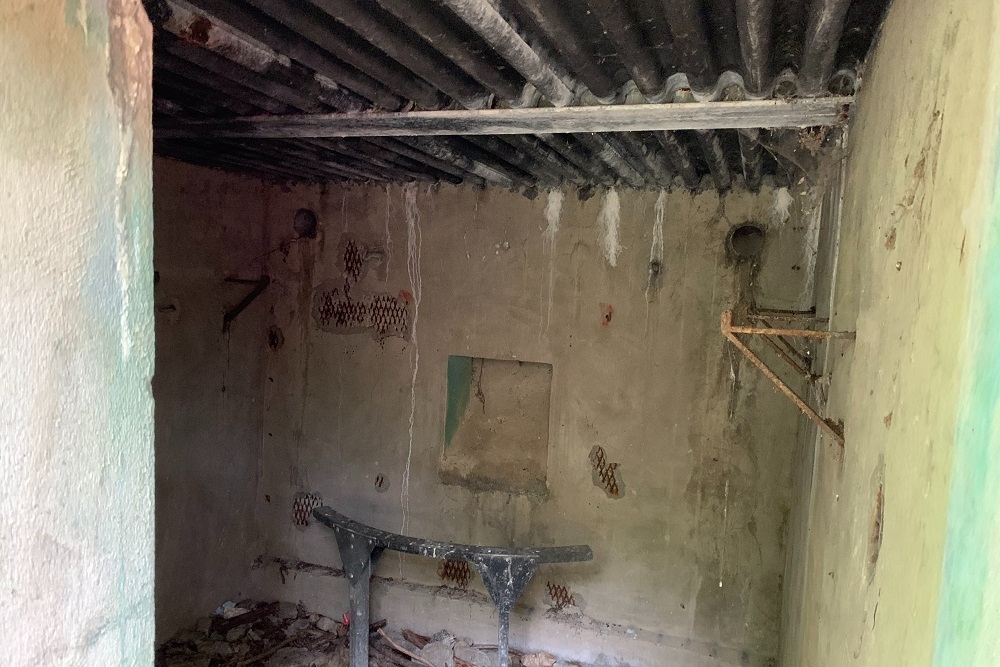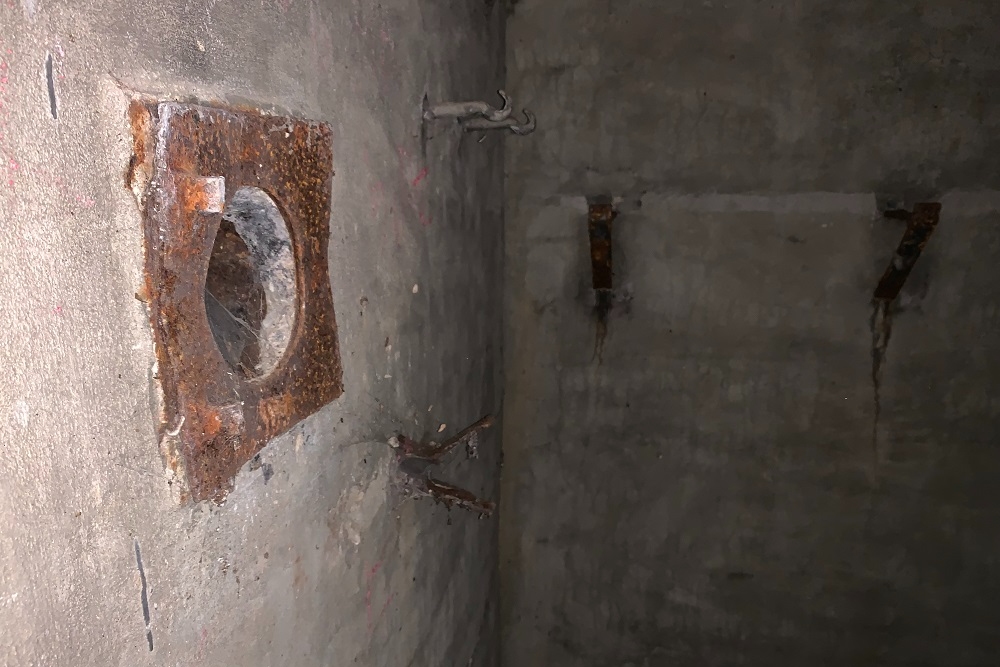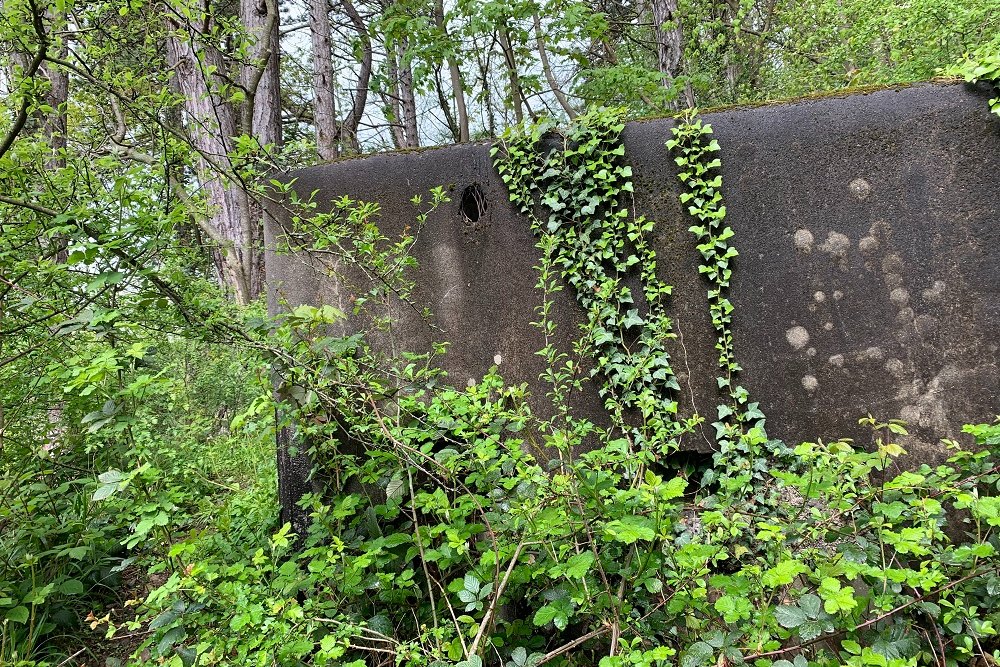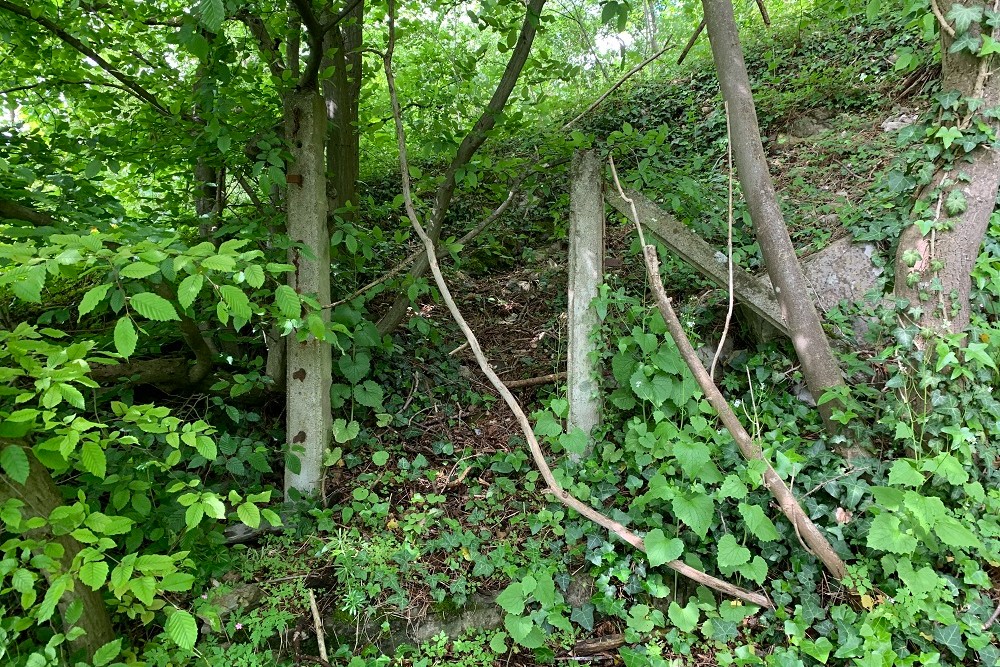Bunker CS A5 Remouchamps
This is bunker CS A5 located in the sector Comblain-Sougné.
However this bunker is not part of the 1st line of defence for the city of Liège, la Position Fortifiée de Liège 1 (PFL 1), but of the Ardennes Line, sector of the Liènne (tributary of the Ambléve) and is an advanced position on the Ambléve of this sector. The forward position (Position Avancée, PA) of the Liènne consisted of 5 bunkers, including this one. This line and that of the Comblain-Sougné sector ran into each other.
It is therefore a typical small bunker found in the other forward positions as for example Stavelot, Hockai or Henri-Chapelle.
The bunkers were built in the early 1930s. The walls of a PA bunker were 60 cm, the rear was 40 cm and the ceiling was 50 cm thick, and of reinforced concrete. These small bunkers had to withstand the impact of a 77 mm shell. These bunkers, unlike the larger line bunkers, had only one entrance door.
Inside, the mount on which the machine gun could be moved from left to right is still present. The metal hatch (photo 3) gave access to the grenadegully for close combat defense. One could drop a hand grenade through this gully. This then fell out through an opening at the bottom of the bunker.
The two round holes above the gun opening serve for ventilation. It should be remembered that firing a machine gun released a lot of fumes that were toxic to the soldiers in the bunker.
The hooks on the wall were for hanging equipment. The shelf supports were meant to put away materials so people could not trip over them. It should be remembered that these (and most bunkers) were not connected to the electricity grid. A storm lamp could be hung from the ceiling, on a hook provided for that purpose. This was the only lighting available in the bunker.
Outside, there are still several fence posts with the original barbed wire from the 1930s that demarcated the military plot. Even the two posts (photo 5) in which the metal entrance gate hung are still present, as well as the stone steps to the lower plot. Although these have been largely covered by soil over the years. When the bunkers lost their strategic value for the defense of Belgium after the war, the metal of the shutters and door was sold as scrap metal.
Do you have more information about this location? Inform us!
Source
- Text: Ed Lewandowski
- Photos: Ed Lewandowski
- -La Position Fortifiée de Liège, deel 1, Les abris de la position avancée, Coenen & Vernier.
Nearby
Museum
Point of interest
- Château De Harzé - Harzé (Aywaille)
- War Memorial Alphonse Masson - Desnié
- Sanatorium St. Edouard - Stoumont
Monument
- Memorial First World War and Liberation Concentration Camps Sougné-Remouchamps - Sougné-Remouchamps (Aywaille)
- War Memorial Sougné-Remouchamps - Sougné-Remouchamps (Aywaille)
- Dropzone Materials Belgian Resistance 1943 - Sprimont
Cemetery
- Belgian Graves Veterans Sougné-Remouchamps - Sougné-Remouchamps (Aywaille)
- Belgian War Graves Sougné-Remouchamps - Sougné-Remouchamps (Aywaille)
- Belgian Graves Veterans Aywaille - Aywaille
Fortification
- Bunker CS A5 bis Remouchamps - Remouchamps
- Guardhouse Bunker CS 5A Bis - Remouchamps
- Bunker CS 24 Sougné - Sougné
